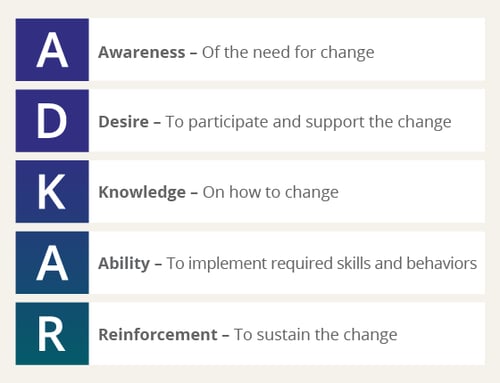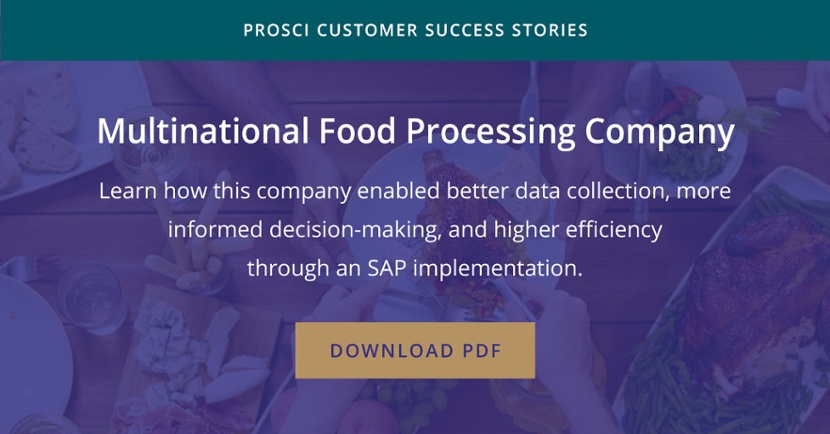Are You Getting Things Done or Getting Things Adopted?

2 Mins
Updated: February 12, 2024
Published: March 21, 2018

Research shows that change management is often the missing ingredient in making organizational priorities successful. How do you know if you're giving change management the priority it needs?
Misunderstanding Change Management
At the end of a day-long leadership meeting on the fundamentals of change management, a chief marketing officer said:
"This has been really informative, but my plate is really full, and I need to get back to the office and get some things done.”
Worse, the leader brought it up in response to how the team would implement what they had learned during the meeting.
As the leader demonstrated, it's easy to slip back into the thinking that change management is a nice-to-have, something that needs to fit around other pressing priorities. Because change management supports and enables the success of these priorities, we often need to remind leaders of its value.
Getting things done vs. getting things adopted
Here’s how the facilitator working with this too-busy executive reminded them why change management matters enough to create clear action items and next steps:
“It is clear that you and all the members of the executive team here have many changes underway that require considerable attention. But as you return to the office, my question is: do you want to get things done, or do you want to get things adopted?”
Every organization has plenty to do, but the reality is many things get done that don’t ever deliver full value because the people to whom the change happened found ways to delay or deflect the change. In other words, they did not adopt the change that was “done.”
Project management gets things done
Most organizations have systems, tools, models and methods for assuring that changes get done. Project management and process improvement are but two examples of methods that assure things get done on time, on budget and within scope. However, it's possible for things to get done and not deliver their intended benefits to the organization because people don’t always fully adopt the changes made.
For example, if you have ever purchased a new piece of technology, you have experienced the gap between installation (getting it done) and adoption. Often, people don't use a smart phone to its full capability. We purchase the phone with the intent of adding streamlining and simplifying our lives, but without using it to its full potential (adopting it), it cannot deliver all its value. This lack of full adoption is not a phone problem—it’s a people problem and fixing it requires people-oriented tools.
Change management gets things adopted
Regardless of type, for any change to deliver its full benefit, everyone impacted by the change must have:
- Awareness of the need for change
- Desire to participate and support the change
- Knowledge on how to change
- Ability to implement the required skills and behaviors
- Reinforcement to sustain the change
Prosci ADKAR Model
Progression through each of these five elements represents the process of change adoption. Facilitating individual change adoption is the crux of change management.
Which Leader Are You?
Leaders who get things done:
- Define success of a change as implementation alone. They shunt change management to the side as being nice to have.
- Think change management is important but don’t invest time, money, people and mindshare in making it a reality.
Leaders who get things adopted:
- Define success of a change as realizing the intended benefits of the change. This means investing in methods, model and tools for facilitating individual change adoption.
- Modify their own behavior to become good sponsors because they know sponsorship is the number one contributor to change success.
- Require their direct reports to understand and embrace their respective roles in change.
- Equip individuals with the understanding and tools they need to facilitate their own change adoption.
Which leader are you? Are you getting things done and getting things adopted?


